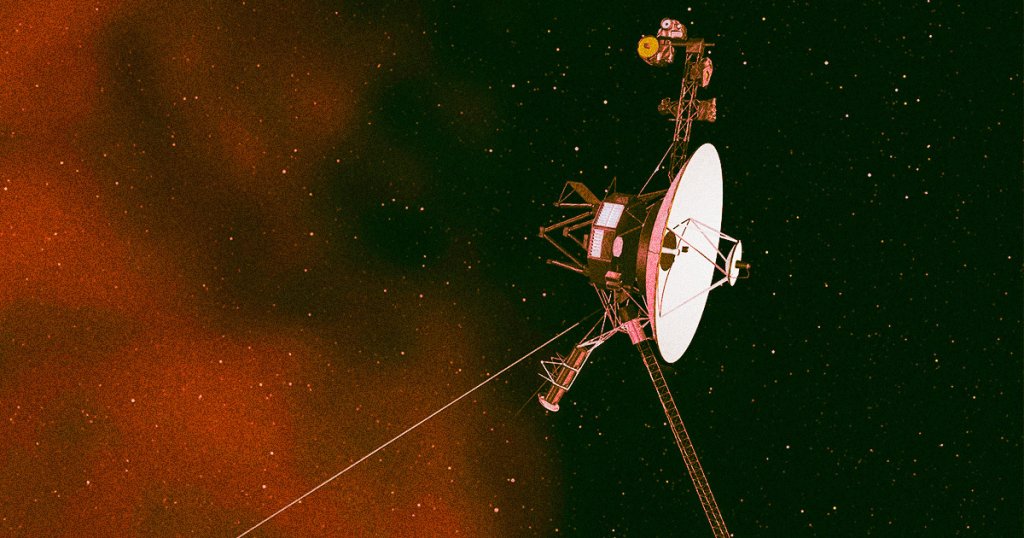They’re trying to fix it… from billions of miles away.
Gen X
NASA’s Voyager 1 probe has been cruising into distant space for 46 years old — and some of that advancd age is apparently showing.
As NASA explained in a blog update, one of the pioneering probe’s computers, known as its flight data system (FDS), is “not communicating properly.” Because of these translation issues, the craft launched during the dawn of space travel is currently unable to send any information back to Earth.
With so many incredible Earth-made crafts currently floating around in space, it’s easy to forget that the probes launched in the Voyager mission are still out there collecting and transmitting data from the outer reaches of our Solar System.
Voyager 1’s specific mission for the past four-odd decades, for instance, has been to collect and transmit back to Earth “data on the transition between the heliosphere — the region of space dominated by the Sun’s magnetic field and solar field — and the interstellar medium,” NASA notes in an explainer.
Ground Control
Normally, the probe — which, oddly, was launched about a month after Voyager 2, making it the second of the two-craft mission to launch despite its numerical name order — sends its scientific readings about interstellar space and its engineering updates in what’s known as a “package” of easily-translatable binary code.
Over the past few months, however, the probe has been “stuck” transmitting repetitive patterns of ones and zeroes that are the binary equivalent of gobbledygook. While the Earth-bound Voyager team was able to target which instrument was behind the malfunction, they haven’t yet been able to adequately troubleshoot it back into working order.
“This past weekend the team tried to restart the FDS and return it to the state it was in before the issue began,” NASA said in the statement, “but the spacecraft still isn’t returning useable data.”
It may take the agency’s engineers “several weeks” to figure out how to fix the probe.
“Finding solutions to challenges the probes encounter often entails consulting original, decades-old documents written by engineers who didn’t anticipate the issues that are arising today,” NASA pointed out. “As a result, it takes time for the team to understand how a new command will affect the spacecraft’s operations in order to avoid unintended consequences.”
You gotta hand it to NASA: There’s little chance that any of the agency’s engineers who were there during the launch of the Voyager mission foresaw it lasting anywhere near this long, and the fact that it’s still anywhere near functional, all things considered, is pretty epic.
More on NASA’s old heads: Space Station Turns 25, Just in Time to Die
Share This Article

